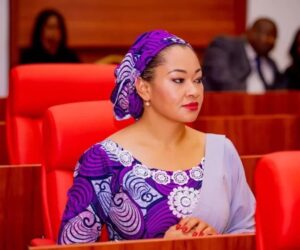Possibly the biggest snag to analysing the performance of the incumbent Bola Tinubu-led federal government is the tendency to do this against the backdrop provided by the Buhari-Emefiele diarchy. The alternative economics practised by the last administration, left most challenges faced by the economy unresolved, while dragging the country to the bottom of the pile on most measures of political and economic performance.
The answer to the question, “What is to be done to grow Nigeria’s economy?”, did not change on May 29, 2023. As has been the case for many years, it involves answering further questions and two clear policy directions. First the questions. How do we drive inflation down in the near-term, and keep it there long enough to anchor domestic inflation expectations in a way that boosts both business investment and household expenditure? The current leadership of the central bank has confirmed that tight monetary conditions work —at considerable cost. Nor is it certain that this policy direction is sustainable if and when inflation becomes sticky downward. Plainly, less accommodating monetary policy does, however, have unpleasant side-effects: it throttles economic activity. This leads to the next question: How do we protect poor households from the fallout of tight monetary conditions?
Invariably, when support for poor households is discussed, the default thought-pattern in these parts is to think palliatives — targeted transfers, and food policy, for instance. However, in the two important examples where significant parts of the population in economies have been moved out of poverty (China and India), support for the poor has been secured through structural boosts to economic activity. Nigeria is not likely to solve the problem with our poor without going down the same route.
This is where the policy directions matter. Since the Babangida years, it has been clear that sustainable economic growth and development in this country can only happen if we prioritise structural reforms that boost non-oil investment in power, ports, logistics, health, education, and digital infrastructure. In the four decades since we first tried out the structural adjustment programme, we have not done enough in this regard. Nor have we ever effectively managed to use temporary oil windfalls to boost domestic economic buffers (including our external reserves) and to finance targeted capital projects rather than fuelling recurrent spending.
Arguing that “there is some empirical work suggesting counterintuitively that the relationship between investment and output is negative”, I have a friend who believes that it is “either that the nature of our investment is not such as to raise output or that we do not invest enough to raise output significantly”. Not surprisingly, despite clear and many opportunities in construction, agri-value chains, fintech/financial services, and tourism/e-commerce, investors have been leery of exposure to the economy largely because of the volatility in the foreign exchange markets that have piggybacked on poor policy formulation and implementation.
With the Tinubu government scoring high on its efforts to stabilise domestic prices, it was important to grok the story told by the output numbers for the second quarter of this year. At 4.23% year on year, gross domestic product (GDP) growth in the three months to end-July 2025 is a decent headline number for the Tinubu government’s report card. It is much higher than the 3.13% recorded in the first quarter, and if you can ignore the arithmetic of the recent rebasing of the GDP data series, it is up on the 3.48% recorded in the same period of last year. Disaggregated, the numbers are impressive still. The non-oil sector, contributing about 96% of measured output, was up 3.64% on an annualised basis. Robust performance in the construction sector and a middling one in manufacturing was offset by a contraction in other services.
And there the fairy tale ends. Agriculture, still largely rain-fed, subsistence, and lately beset by deteriorating security conditions in the nation’s breadbasket contributed about 21.04% to nominal GDP in Q2 2025. Asset managers are quick to remind you of the idea of “concentration risk”. In this case of the social and political risks from a sector that employs the largest proportion of the country’s labour force also being its least productive.
The full story of the second quarter output numbers is, however, told by a second risk. With real growth of around 20.46% in the second quarter of this year, the oil industry was the single largest proximate driver of the quarter’s outperformance. True, higher crude oil output and export receipts feed incomes, foreign exchange inflows, and industry activity. But we have been down this road several times before. And we all know that high dependence on volatile oil prices is not a good thing for our economy. A sizeable part of the GDP upside in the second quarter was oil-driven and thus vulnerable to global price and supply swings. A reversal in oil output would weaken growth quickly.
It is tempting, at this point, to ask for a plan for Nigeria’s development that looks beyond political, economic, and social horizons, rather than at the imperatives of the next electoral checkpoint. But we have had those, too. What we want, under the Tinubu administration, as with civilian and military governments since the mid-1980, is a commitment to making the private sector the economy’s engine of growth, and the transitioning of the public sector from a goods and services provider to that of a market-based regulator.









